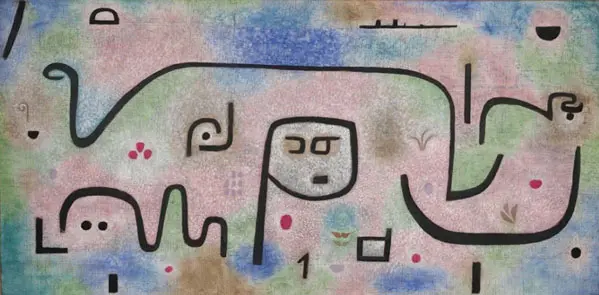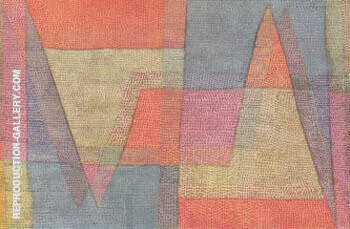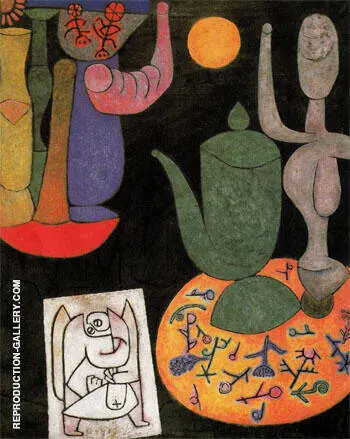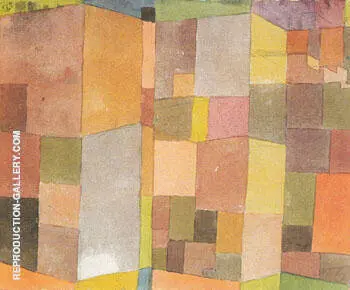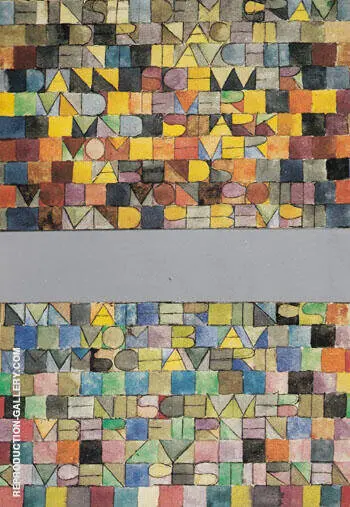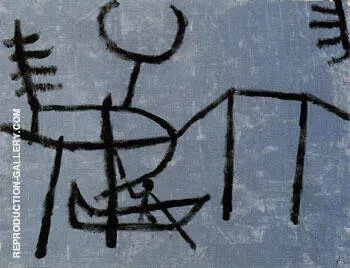Abstract Oil Painting Reproductions
Find Abstract Oil Painting Replicas by Abstract Artists
The Abstract Art: A Brief Introduction
Abstract Art dominated the art world for much of the 20th century. Abstract oil paintings aimed to transgress previous creative boundaries, pushing art toward spiritual and academic goals. It’s a fascinating style, rich in intellectual interest and artistic beauty. Yet, despite this, it’s also one of the most misunderstood terms in Modern Art.
In this brief introduction to abstract art paintings, we answer some of the most commonly asked questions on the genre. From what exactly makes abstract art to famous painters and their best-known works, here’s everything you need to know.
What does Abstract Art mean?
In the most basic terms, abstract art refers to any creative output that doesn’t primarily depict visual reality. Instead, the main focus is shapes, forms, colors, and mark-making to achieve emotional and intellectual effects. Abstract refers to extracting or removing something when used as a verb, feeding into its adjectival meaning, and describing something existing primarily as an idea rather than a physical form.
These meanings apply to art that focuses on ideas and painterly effects for their own sake. Despite this strict definition, art that depicts objects, landscapes, and figures can still be abstract. In this case, forms are systematized or simplified within the composition. These broad concerns have dominated much of modern art since the early 1900s. They defined a generation and an artistic style in an age of widespread upheaval and global turmoil.
What makes an Abstract Painting?
Many features make abstract paintings. The approaches are massively varied, from Wassily Kandinsky and Jackson Pollock’s flowing, colorful forms to Kazimir Malevich and Piet Mondrian’s pared-back geometric shapes. Nonetheless, art becomes abstract when it focuses on concerns outside physical reality. Most often, famous abstract paintings carry a moral message. While this does not necessarily mean religious principles, artists communicate ideas such as simplicity, purity, painterly order, and spirituality.
Abstract art can also reference pure abstraction without formative sources in external visual realities. Finally, abstract art blurs the boundaries with movements such as concrete art, which strive to remove any references to symbolic meanings and observed reality. Non-objective art is another offshoot, inspired by the Greek philosopher Plato, who believed geometry was the most straightforward presentation of beauty and truth.
Who are some of the most famous Abstract Artists?
Given its popularity for many of the 20th century, numerous famous artists exist. Some of the best-known abstract oil paintings on canvas emerged from Russia, Spain, and Sweden.
Early genre pioneers included Hilma af Klint, Wassily Kandinsky, and Juan Gris. Although these artists straddled multiple movements and styles, what linked their work was a deep interaction and fascination with abstract ideals. Hilma Af Klint’s artwork faded from public view after her death, but her art has experienced a resurgence in recent years. Today, she is considered one of the first abstract artists in the history of Western art. Other famous artists include Kazimir Malevich, Piet Mondrian, and Theo van Doesburg.
Sonia Delaunay was another early female pioneer of abstract art. As a Ukrainian-born artist, she exemplified the distinctly European nature of the movement. Training in Russia and Germany, she later moved to Paris and worked in textiles, fashion, theatrical set design, and fine art. Colorful abstract painting is the hallmark of famous paintings by Sonia Delaunay and her brother Robert.
Towards the mid-20th century, however, abstraction moved across the Atlantic. American art took on a new life when mixed with the principles of Abstract Impressionism and Action Painting.
Who is the most famous Abstract Artist?
Mark Rothko and Jackson Pollock created some famous paintings. While many art historians debate their accurate identification as abstract artists, they exemplify the movement’s focus on ideas and emotions rather than symbolic representation. Rothko and Pollock represent two entirely polarized versions of large abstract paintings. Both men created monumental works. Nevertheless, while Rothko gently diffused color across his canvases in meticulously planned geometric compositions, Pollock attacked his canvases with paint. Similarly, Rothko aimed to evoke carefully cultivated emotional responses in his viewers. On the other hand, Pollock’s works appeared in incandescent bursts of creativity, emphasizing the physical act of painting itself.
In terms of early European abstraction, Wassily Kandinsky and Piet Mondrian produced some of the most famous abstract paintings. Kandinsky was also one of the first artists to write about abstract art. Describing the process as “art independent of one’s observations of the external world,” Kandinsky sincerely believed in the spiritual and communicative power of color.
Is Van Gogh an Abstract Painter?
Vincent van Gogh is one of the most famous artists. However, given his pioneering use of color and expressive technique, many people ask if the paintings by Van Gogh paintings are early abstract art. Subsequent artist Jackson Pollock used the same impulsive, gestural thick paint application as van Gogh. Wassily Kandinsky, Hilma af Klint, and van Gogh also developed color symbolism to express subjective emotions and experiences. However, Van Gogh was not an abstract artist; despite the heavy emotional and dynamic nature of his painting, Van Gogh was a post-impressionist painter.
Starry Night painting by van Gogh characterizes the movement’s focus on the expressive possibilities of color and composition. While post-impressionist artists rejected strictly naturalistic renderings of light and shade, Van Gogh still upheld careful attention to physical reality.
What are the most famous Abstract Art Paintings?
Here are six of the most famous abstract art paintings.
They provide an overview of European and American abstract wall art and some of the 20th century's most celebrated artistic creations.
Hilma af Klint, The Ten Mainstay IV 1907
As a Swedish artist inspired by spiritualism and philosophy, Hilma af Klint produced some of the first large abstract paintings. These works explored cycles of life and death, geometric principles, and color theory. Part of a more extensive series, The Ten Mainstay exemplifies her bold, colorful creations untethered to the physical world. They were groundbreaking examples of intellectual and artistic imagination, predating the non-representational works of Kandinsky, Malevich, and Mondrian.
Paul Klee, Senecio 1922
Otherwise known as Head of a Man Going Senile, this unusual portrait resides in the Kunstmuseum, Basel. As well as an example of abstract wall art, it also references Paul Klee’s consuming interest in the principles of Cubism. Klee separates the human head into rectangles of flat, geometric color. While this maintains an aspect of figurative painting, the artist primarily referenced themes of aging, senility, and the passing of time. Klee divides the painting across numerous lines and sub-divisions. In this way, Paul Klee paintings encourage viewers to consider his work from multiple visual and intellectual perspectives.
Piet Mondrian, Composition Red, Yellow, Blue 1930
Amongst reproductions of famous paintings, Mondrian’s iconic Composition Red, Yellow, Blue retains enduring public fascination. Consisting of thick black brushwork defining bright geometric borders, it is staggering in its simplicity and power. Utilizing Mondrian’s now legendary palette of primary colors, interspersed with white and black, it reveals Mondrian's fascination with the Dutch De Stijl movement. Piet Mondrian and Theo van Doesburg strove for near-total abstraction and artistic simplicity.
Wassily Kandinsky, Composition X 1939
Composition X is an abstract oil painting on canvas emerging from Kandinsky’s interest in the links between art and music. It is one of his significant oil paintings, contrasting with his lesser Improvisation artworks. The predominant black tones of this painting are highly unusual. Unsurprisingly, black represented closure and death to Kandinsky, as in 1939, he knew he was reaching the end of his life and artistic career. The meanings of the shapes floating against this deep, dark space remain at the viewer’s discretion.
More Recent Abstract Artists
Two of its most famous exponents came towards the end of abstraction's creative prime. These two painters were Jackson Pollock and Mark Rothko.
Mark Rothko, White Center, Yellow, Pink and Lavender on Rose 1950
Commonly known as White Center, this large abstract painting embodies Rothko’s signature “multiform” painting style. Several blocks of complementary layered colors demonstrate Rothko’s continued compositional elements. This is one of the first Rothko paintings divided into purely horizontal bands of color. Some edges merge with the background, while the color fields recede or burst with luminous energy. With its constantly shifting abstract reality, colorfield painting changed modern art forever.
Jackson Pollock, No 10 Convergence 1952
Last but not least on this list of famous abstract paintings is Convergence by Jackson Pollock. As a prime example of abstract expressionism and action painting, it uses the principles of abstraction yet prioritizes the subconscious and accidental effects of painting. Pollock’s lines, circles, and marks convey his emotional state and the universal laws of gravity and fluidity dictating the pooling and mixing of paint. Created during the Cold War, some art historians argue that the painting represents freedom of speech and self-expression.
Oil Paintings Reproductions of Famous Paintings
Buy colorful wall art of abstract paintings on canvas, and explore our unparalleled collection of famous painting replicas. Enjoy fine art reproductions from many art movements, ranging from Abstract wall art to Renaissance oil paintings, and discover 30,000+ oil paintings for sale.
Cannot Find What You Are Looking For?
Reproduction Gallery Information
Customer Service
(Send Us A Message)
Tel: (302) 513 3464















